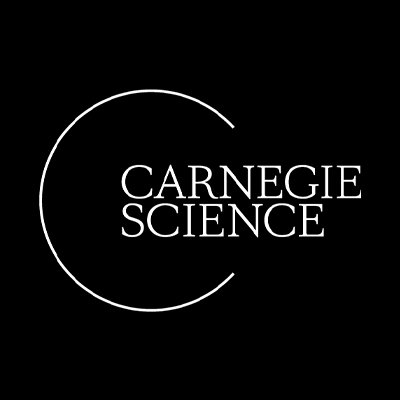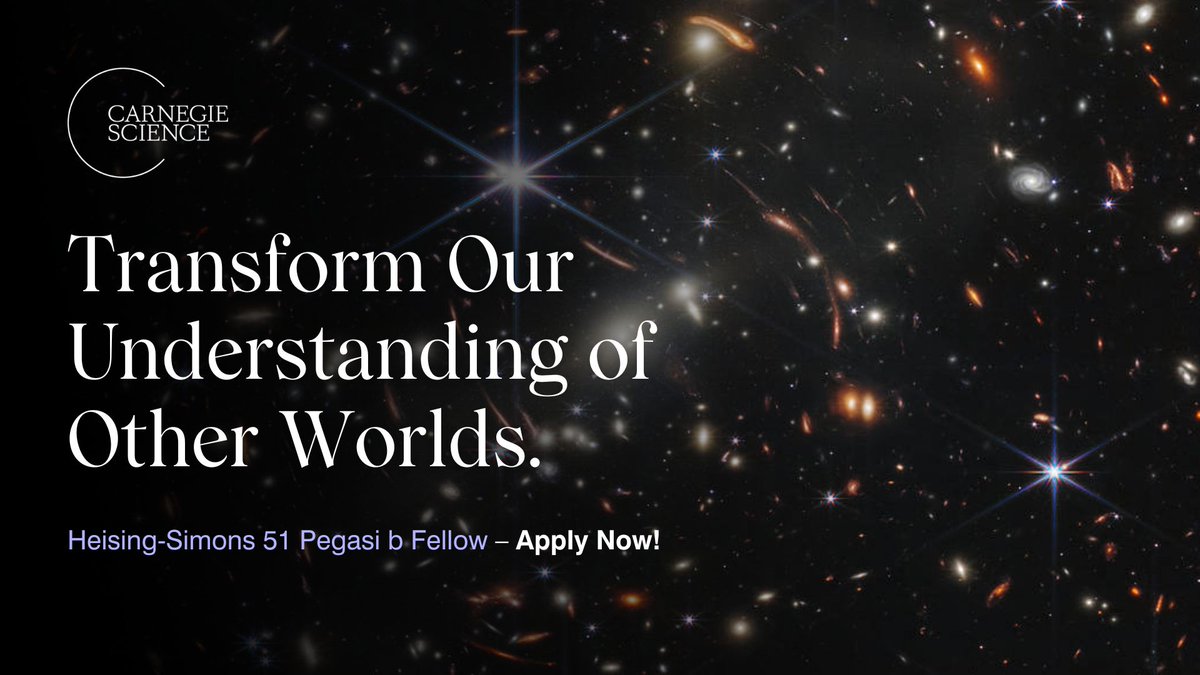
Carnegie Science
@carnegiescience
Followers
13K
Following
29K
Media
7K
Statuses
32K
The Carnegie Institution for Science is dedicated to scientific discovery and supporting exceptional individuals in an atmosphere of independence.
Washington D.C.
Joined March 2009
The @HSFdn 51 Pegasi b Fellowship backs bold research in planetary astronomy—from exoplanets to Solar System origins. As a host, Carnegie Science offers Fellows freedom to explore big questions at the Observatories, Earth & Planets Lab, or both.Learn more:
0
0
0
The @HSFdn 51 Pegasi b Fellowship supports early-career scientists exploring big questions in planetary astronomy. Carnegie Science is proud to be a host institution. Fellows can join us at the Observatories, the Earth & Planets Lab, or both. Apply here:
0
0
0
#VeraRubin reminded us that the true reward isn’t prizes or awards—it’s the discovery. More quotes👇 . #StayCurious #CaptureTheCosmos #ScienceQuotes #MondayMotivation #WomeninSTEM
0
0
1
As a proud host institution for the @HSFdn 51 Pegasi b Fellowship, Carnegie Science offers Fellows the chance to work at Carnegie Observatories, the Earth & Planets Laboratory, or both. Learn more:.
Planet formation. Exoplanet atmospheres. Cosmic origins. @HSFdn 51 Pegasi b Fellows at Carnegie Science dive deep into the biggest questions in planetary astronomy. Apply now to join us at Carnegie Observatories, the Earth & Planets Lab, or both:.
0
1
3
Planet formation. Exoplanet atmospheres. Cosmic origins. @HSFdn 51 Pegasi b Fellows at Carnegie Science dive deep into the biggest questions in planetary astronomy. Apply now to join us at Carnegie Observatories, the Earth & Planets Lab, or both:.
0
1
0
A timeless message from someone who spent her life helping us see our place in the universe. More inspirational quotes from #VeraRubin👇 . #CaptureTheCosmos #ScienceQuotes #StayCurious #MondayMotivation #WomeninSTEM
0
2
6
"We have peered into a new world and have seen that it is more mysterious and more complex than we had imagined." . - Vera Rubin. Need more #MondayMotivation? . #CaptureTheCosmos #ScienceQuotes #StayCurious
0
1
6
The tools are only part of the story! . More #VeraRubin quotes to help spark YOUR imagination👇 . #CaptureTheCosmos #ScienceQuotes #StayCurious
0
1
1
🏞️ Vera Rubin at Bear Lake with her kids in 1961. All four earned Ph.D.s in the sciences or math. She once wrote: “I succeeded in two goals—to raise a family and to be an astronomer.” .#VeraRubin #STEMFamilies
1
0
0
From a homemade telescope to dark matter discoveries—Vera Rubin reshaped our view of the universe. ✨. We’re sharing 10 iconic photos from the newly digitized Carnegie archives that capture her life, legacy, and love of science. 🧵.#VeraRubin . 🔗
1
2
3
RT @giantmagellan: Big news: @VRubinObs revealed its first images—offering an early glimpse at the survey science that will reshape astrono….
0
9
0


















